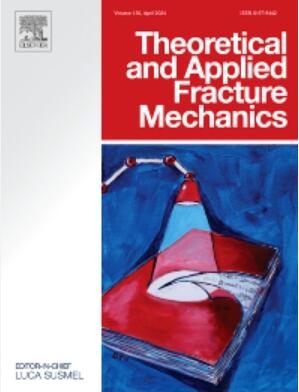Determining Norton creep properties from small punch creep tests by using the representative stress–strain method and inverse approach
IF 5
2区 工程技术
Q1 ENGINEERING, MECHANICAL
引用次数: 0
Abstract
The small punch creep test (SPCT) emerges as an innovative technique for evaluating the creep properties of materials. Although the existing standards, such as CWA 15627 and EN 10371, establishes empirical correlations between SPCT and uniaxial creep tests (UCT), the complexity inherent to SPCT mandates an empirical approach that is both material-specific and labor-intensive for achieving precision. This paper introduces a novel methodology that synthesizes the representative stress–strain method with inverse finite element analysis to extract Norton creep properties of metallic materials directly from small punch test (SPT) and SPCT. The representative stress–strain method to SPT facilitates the determination of elasto-plastic properties at elevated temperatures, enabling a streamlined prediction of Norton creep law parameters by the inverse approach of SPCT. Notably, this methodology circumvents the need for intermediate UCT conversions, thereby providing a more efficient and accurate pathway for directly obtaining Norton creep properties from SPT and SPCT. Experimental validation conducted on P91 and P92NT steels at 600°C confirms a strong correlation between the predicted Norton creep properties and those obtained from UCT, underscoring the practicality and accuracy of the proposed approach.
求助全文
约1分钟内获得全文
求助全文
来源期刊

Theoretical and Applied Fracture Mechanics
工程技术-工程:机械
CiteScore
8.40
自引率
18.90%
发文量
435
审稿时长
37 days
期刊介绍:
Theoretical and Applied Fracture Mechanics'' aims & scopes have been re-designed to cover both the theoretical, applied, and numerical aspects associated with those cracking related phenomena taking place, at a micro-, meso-, and macroscopic level, in materials/components/structures of any kind.
The journal aims to cover the cracking/mechanical behaviour of materials/components/structures in those situations involving both time-independent and time-dependent system of external forces/moments (such as, for instance, quasi-static, impulsive, impact, blasting, creep, contact, and fatigue loading). Since, under the above circumstances, the mechanical behaviour of cracked materials/components/structures is also affected by the environmental conditions, the journal would consider also those theoretical/experimental research works investigating the effect of external variables such as, for instance, the effect of corrosive environments as well as of high/low-temperature.
 求助内容:
求助内容: 应助结果提醒方式:
应助结果提醒方式:


